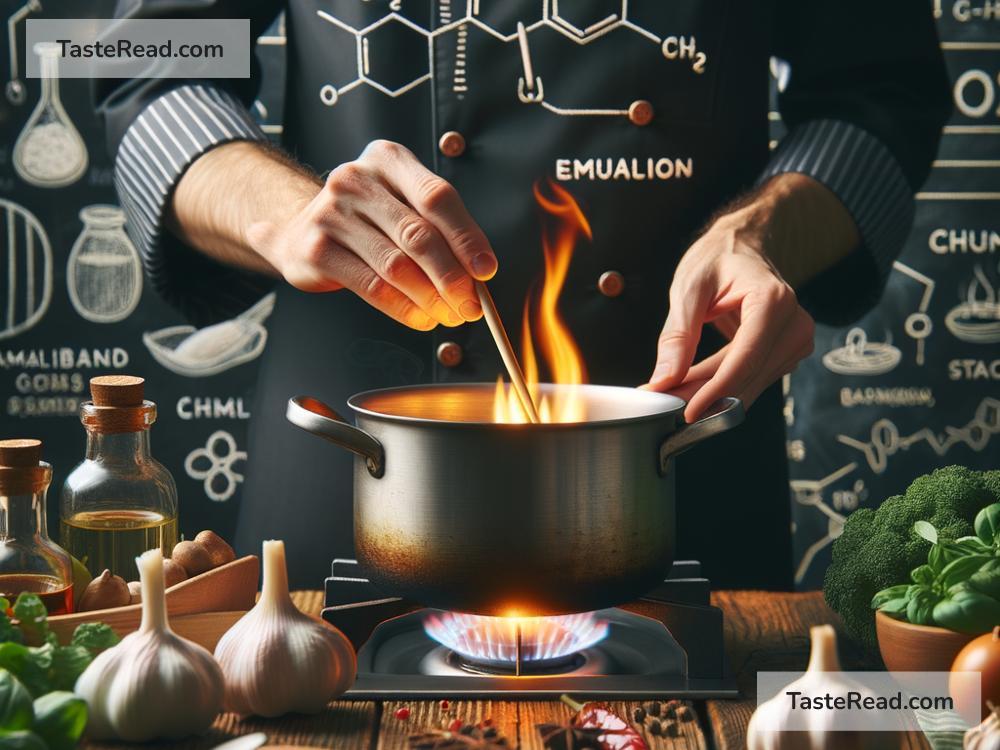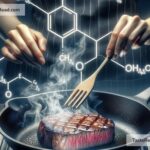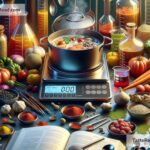The Science of Cooking with Chemical Gallantry: Techniques and Tips
Cooking is not just an art; it’s a science. Every time you whip up an omelet, bake bread, or grill a steak, you are engaging in chemical reactions that transform ingredients into delicious meals. Understanding the science behind cooking can help you elevate your culinary skills to the next level. In this blog, we’ll explore some fascinating kitchen chemistry and share practical techniques and tips to help you cook with confidence.
What Is Chemical Gallantry in Cooking?
At its core, chemical gallantry refers to the smart and skillful use of chemistry to achieve specific results in cooking. From caramelizing sugar to tenderizing meat, chemistry is everywhere in the kitchen. The gallant part? It’s about approaching cooking with an adventurous and curious mindset—using science as your trusty sidekick to create magic in the kitchen.
The Basic Chemistry of Cooking
Cooking doesn’t just heat food; it changes the molecules inside ingredients. Here are a few key chemical reactions that happen in the kitchen:
-
Maillard Reaction: When proteins and sugars in food interact under heat, they produce new flavors, aromas, and a golden-brown color. This is why steaks, toast, and roasted veggies taste so delicious.
-
Caramelization: When sugar is heated, it breaks down and forms richer, sweeter flavors. Think of caramel sauce or the crispy sugar topping on crème brûlée.
-
Fermentation: Microorganisms like yeast or bacteria break down sugars to create new flavors. Fermentation is behind bread rising, yogurt thickening, and kimchi’s tangy taste.
-
Emulsification: Combining two liquids that usually don’t mix, like oil and water, produces creamy textures. This technique is key to making salad dressings or mayonnaise.
Techniques Inspired by Cooking Science
Now that you know a little about the chemistry, let’s explore some techniques that use it to make your cooking shine. These tips are simple but effective, and anyone can try them.
- Master the Maillard Reaction for Perfect Browning
Want golden-brown meats, veggies, or bread? Pat your ingredients dry before cooking and use high heat. Moisture slows down browning, so removing it allows the Maillard reaction to happen more efficiently.
Pro Tip: Add a dash of sugar if you’re pan-frying something that doesn’t naturally brown easily, like tofu or veggies. The sugar speeds up the reaction.
- Brining: The Science of Juicy Meat
Brining involves soaking meat in a saltwater solution to keep it moist and flavorful. The salt changes the proteins in the meat, allowing them to hold onto water.
How to Brine: Dissolve 1/4 cup of salt in 4 cups of water and let your chicken or pork soak for a few hours in the fridge. Rinse before cooking.
- Bake with Precision
Baking is one of the most chemical-dependent forms of cooking. Use measuring tools to ensure the right balance of ingredients because the proportions of flour, sugar, fat, and liquid determine how cakes or cookies rise and hold their shape.
Pro Tip: Use room-temperature eggs and butter for smoother batters that trap air more effectively.
- Use Acid to Brighten Flavors
Acids like lemon juice, vinegar, or yogurt add brightness and cut through richness in dishes. They also denature proteins, which is why ceviche (fish cured in citrus juice) gets “cooked” without heat.
Pro Tip: Add acid at the end of cooking for a fresh flavor, like squeezing lemon over roasted vegetables or in soups.
- Experiment with Emulsifications
Making creamy salad dressings or sauces is simple when you understand emulsification. Combine an emulsifier (like mustard or egg yolks), an acid (like vinegar or lemon juice), and oil while whisking.
Pro Tip: Add oil slowly while whisking vigorously to keep the mixture smooth and creamy.
- Play with Heat Zones
Cooking is all about controlling temperature. Use high heat for searing and low, steady heat for simmering or slow cooking to achieve the best results.
Pro Tip: Invest in a good thermometer for precise temperature control, especially for meats or candy-making.
- Caramelize for Depth
Want deep, nutty sweetness in your dishes? Caramelization can be your best friend. Slowly cook onions, sugar, or even vegetables to unlock natural sweetness.
Pro Tip: Don’t rush while caramelizing. Low heat and patience are key.
Why It Matters
Cooking scientifically isn’t just for professional chefs. It’s a way to transform simple ingredients into extraordinary meals. When you understand what’s happening chemically, you can fix mistakes, adjust recipes, and create new flavors with confidence.
For example, have you ever wondered why your cookies flatten too much? It’s likely that the butter melted too quickly. Understanding how fat behaves can help you prevent this problem by chilling your dough before baking. This is science at work—and you’re the gallant hero wielding it in the name of flavor.
Start Small, Experiment Often
You don’t need a lab coat or fancy equipment to use science in the kitchen. Start with small experiments—like adjusting how you brown your ingredients or adding acid to brighten a dish. Over time, you’ll develop an instinct for how chemical reactions affect flavor, texture, and appearance.
Final Thoughts
Cooking with chemical gallantry is both fun and rewarding. Every recipe is an opportunity to learn something new about the science of food. Armed with a curious spirit, a few basic techniques, and an understanding of the chemistry involved, you can unlock endless possibilities to create mouthwatering meals.
So, roll up your sleeves, grab a whisk, and take a leap into the marvels of kitchen chemistry. Because when art and science come together, that’s when true magic happens. Happy cooking!


